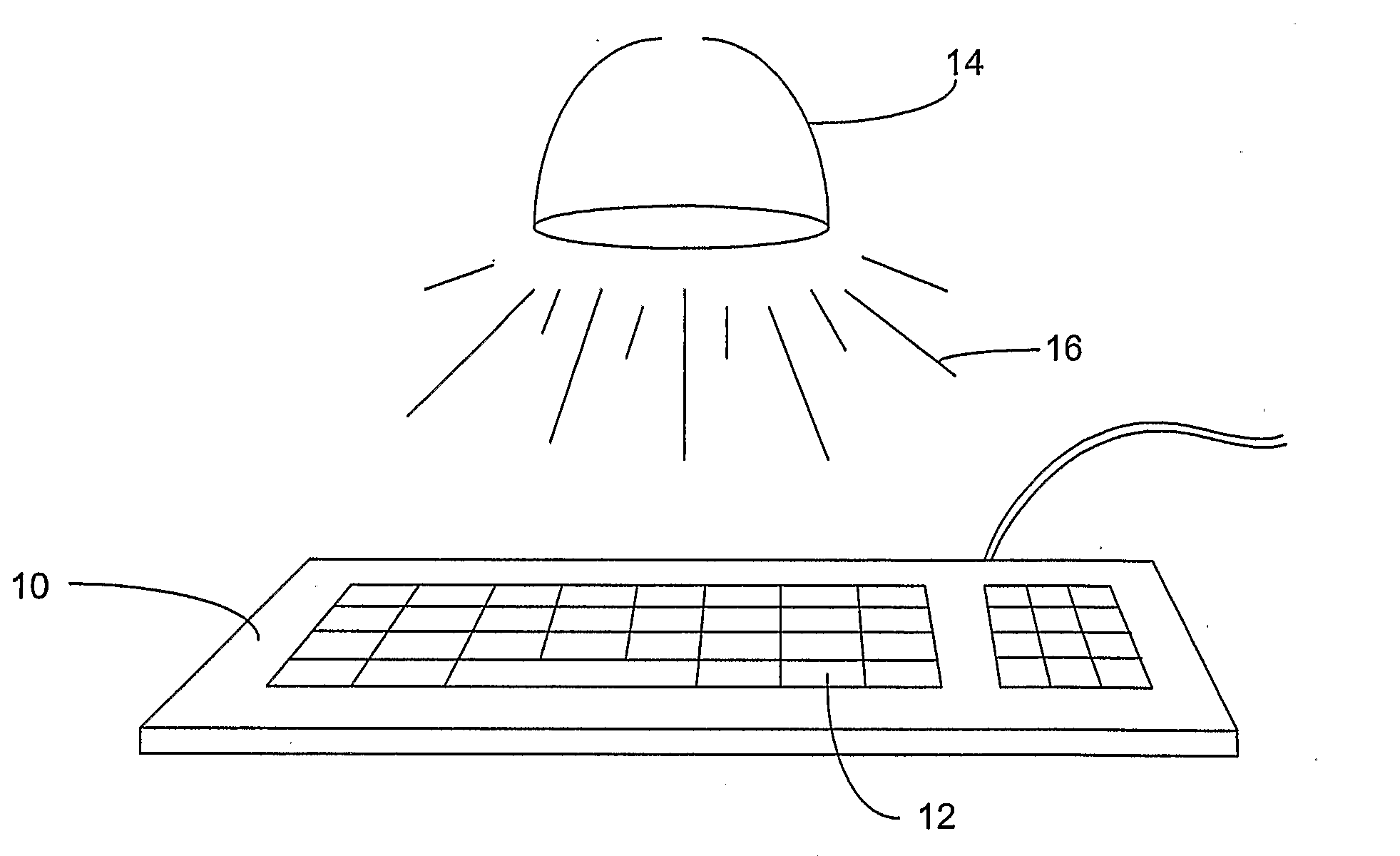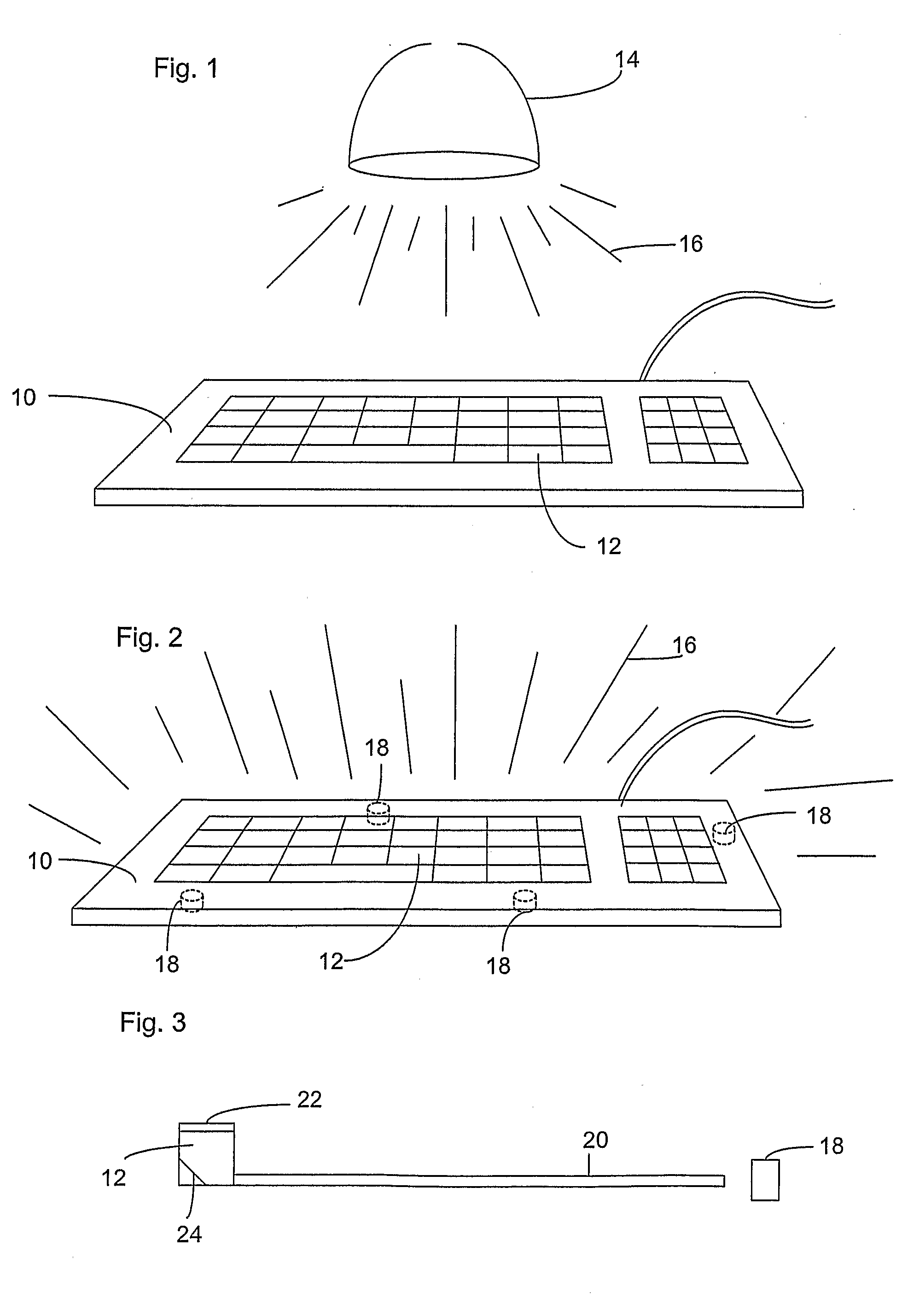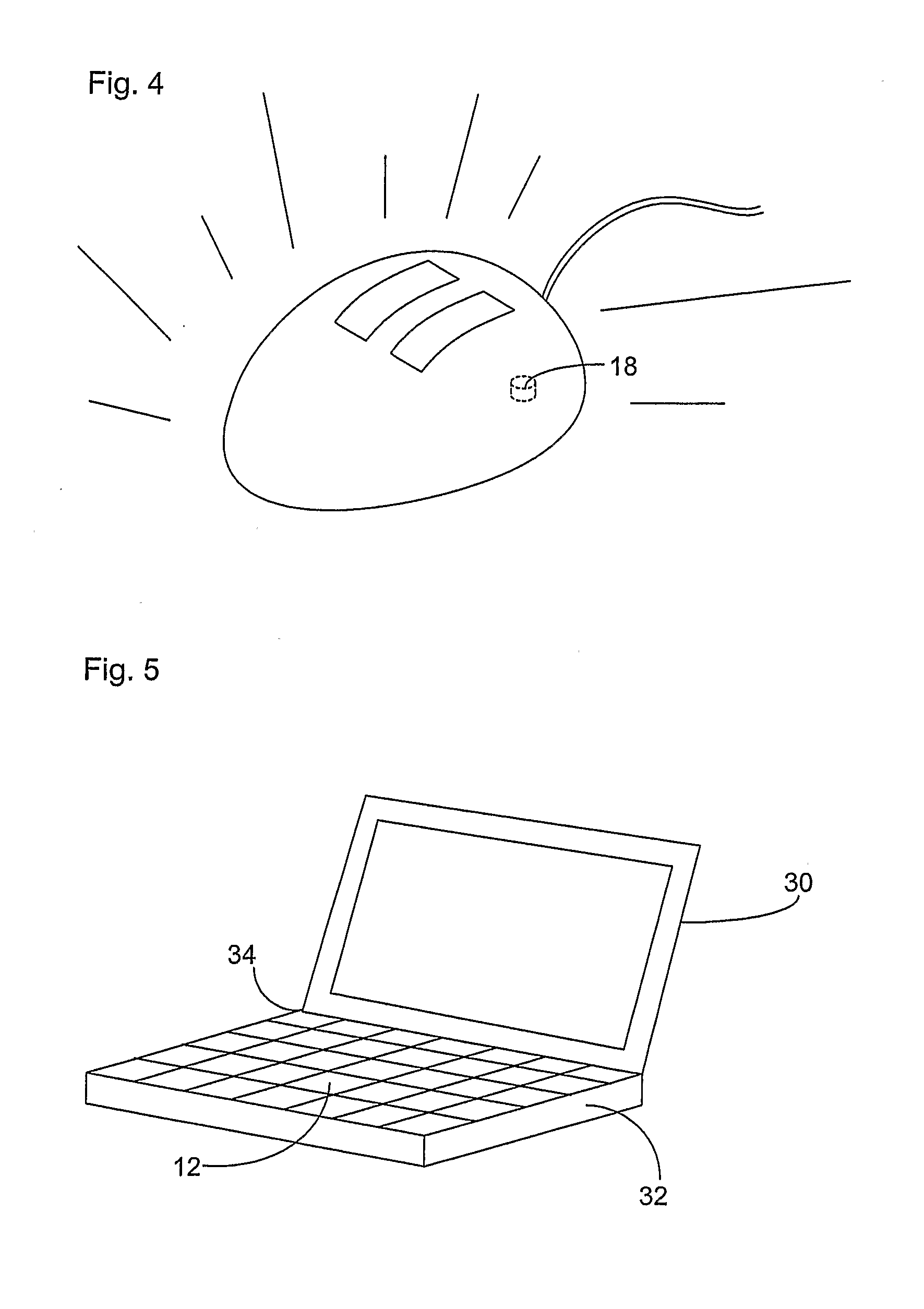Computer devices and accessories
- Summary
- Abstract
- Description
- Claims
- Application Information
AI Technical Summary
Benefits of technology
Problems solved by technology
Method used
Image
Examples
example 8
[0124]Example 3 was repeated using nile blue sulphate as the photosensitizer. Samples were illuminated for 30 minutes. The results are shown in Table 2 below.
TABLE 2Concentration ofNanoparticleNanoparticlephotosensitiser1sizeconcentration1ExamplePhotosensitiser(mM)(nm)(particles / ml)Result22Toluidine blue 1151 × 1015— 5*10** / ***20****50****100 **3Toluidine blue1024 × 1013*20****50*4Toluidine blue20151 × 1015***1 × 1014****5Methylene blue20151 × 1015****1 × 1014****1 × 1013****6Methylene blue2024 × 1013****4 × 1012****4 × 1011****7Tin chlorine6 20324 × 1013—4 × 1012**4 × 1011***8Nile blue sulphate1024 × 1013***20****50****1concentration in mixed solution2Key: — less than 50% kill; *50-90% kill; **90-95% kill; ***95-99% kill; ****99-100% kill3concentration in m / ml
Examples of Conjugates and their Effectiveness
[0125]Please note that these examples are for the purpose of illustration only and are not to be construed as limiting the scope of the invention in any way.
example 1
Synthesis of TBO-tiopronin-gold Nanoparticle Conjugates
Chemicals
[0126]Hydrogen tetrachloroaurate (tetrachloroauric acid; HAuCl4.3H2O, 99.99%), N-(2-mercaptopropionyl)glycine (tiopronin, 99%) and sodium borohydride (99%) were purchased from Aldrich. Toluidine Blue O (“TBO”, 90%) was purchased from Acros Organics. Buffers were prepared according to standard laboratory procedure. All other chemicals were reagent grade and used as received.
[0127]The synthesis of the conjugates involved two steps:
[0128](1) Synthesis of tiopronin-gold nanoparticle conjugate; and
[0129](2) Preparation of TBO-tiopronin-gold nanoparticle conjugate.
Synthesis of Tiopronin-gold Nanoparticle Conjugate
[0130]Tetrachloroauric acid (0.62 g; 1.57 mmol) and N-(2-mercaptopropionyl)glycine (tiopronin, 0.77 g; 4.72 mmol) were dissolved in 6:1 methanol / acetic acid (70 mL) giving a ruby red solution. Sodium borohydride (NaBH4, 1.21 g; 32 mmol) in water (30 mL) was added with rapid stirring, whereupon the solution temperatur...
examples 2-5
Lethal Photosensitization of Staphylococcus aureus using a TBO-tiopronin-gold Nanoparticle Conjugate
PUM
| Property | Measurement | Unit |
|---|---|---|
| Fraction | aaaaa | aaaaa |
| Fraction | aaaaa | aaaaa |
| Fraction | aaaaa | aaaaa |
Abstract
Description
Claims
Application Information
 Login to View More
Login to View More - R&D
- Intellectual Property
- Life Sciences
- Materials
- Tech Scout
- Unparalleled Data Quality
- Higher Quality Content
- 60% Fewer Hallucinations
Browse by: Latest US Patents, China's latest patents, Technical Efficacy Thesaurus, Application Domain, Technology Topic, Popular Technical Reports.
© 2025 PatSnap. All rights reserved.Legal|Privacy policy|Modern Slavery Act Transparency Statement|Sitemap|About US| Contact US: help@patsnap.com



